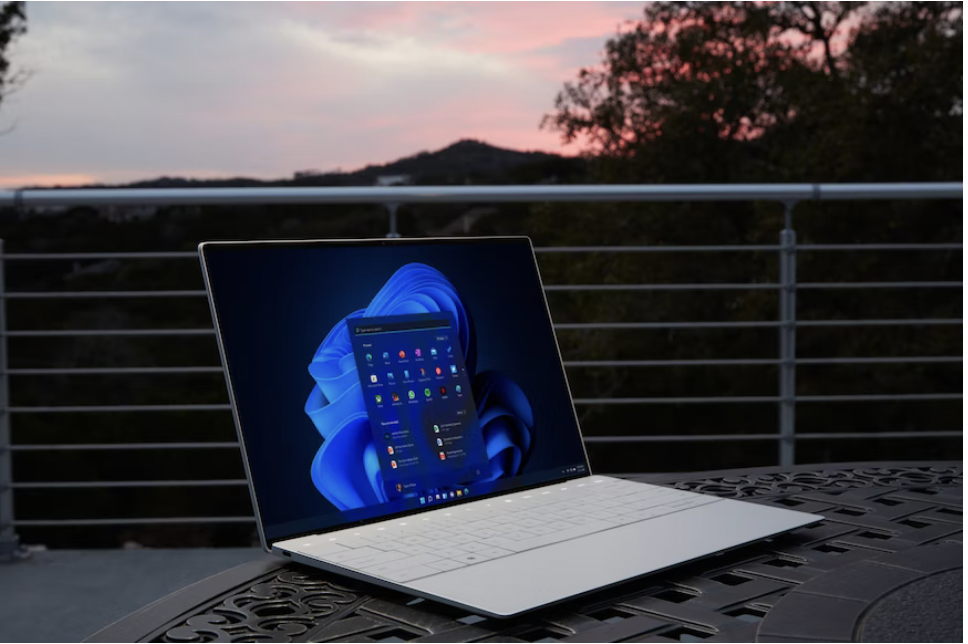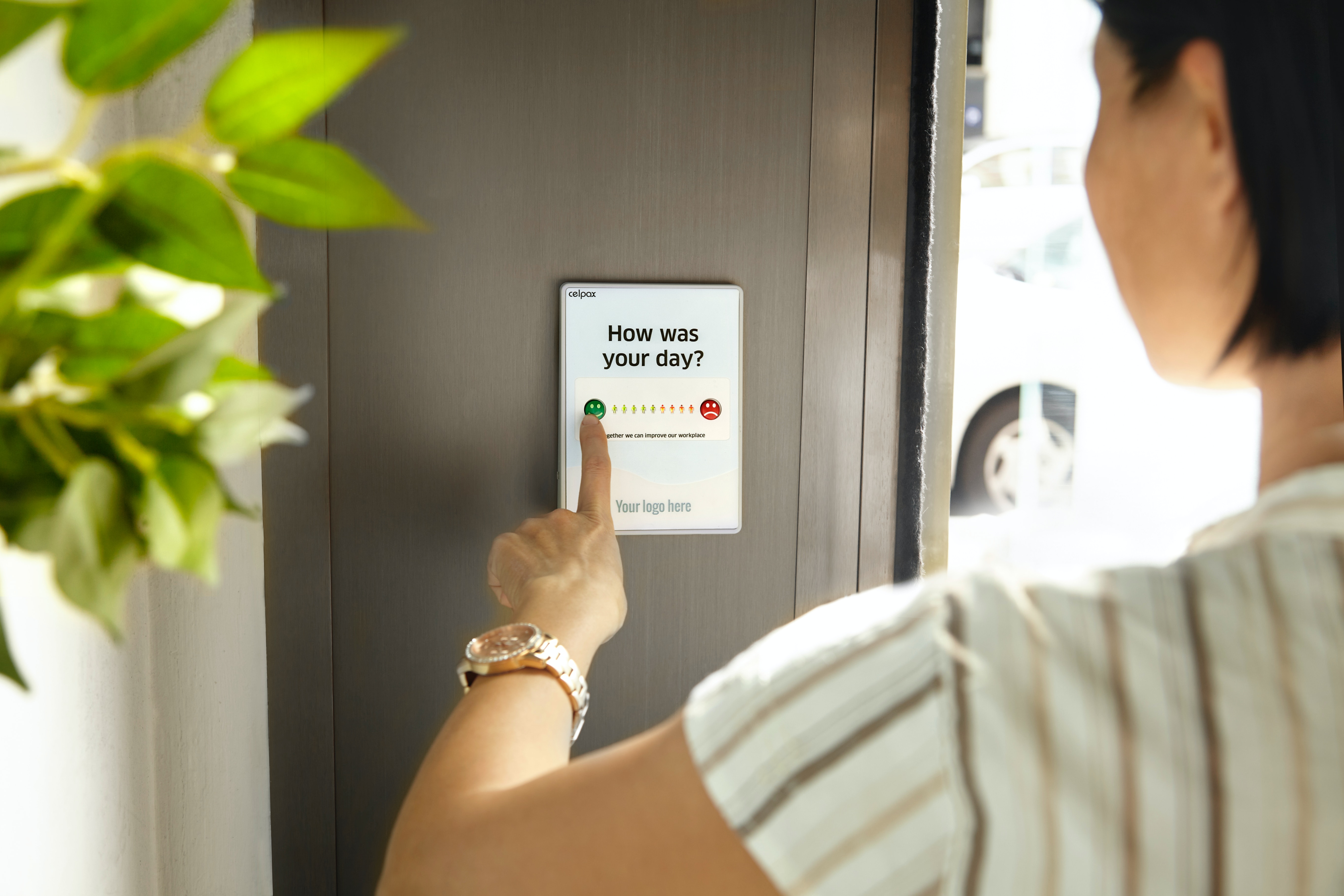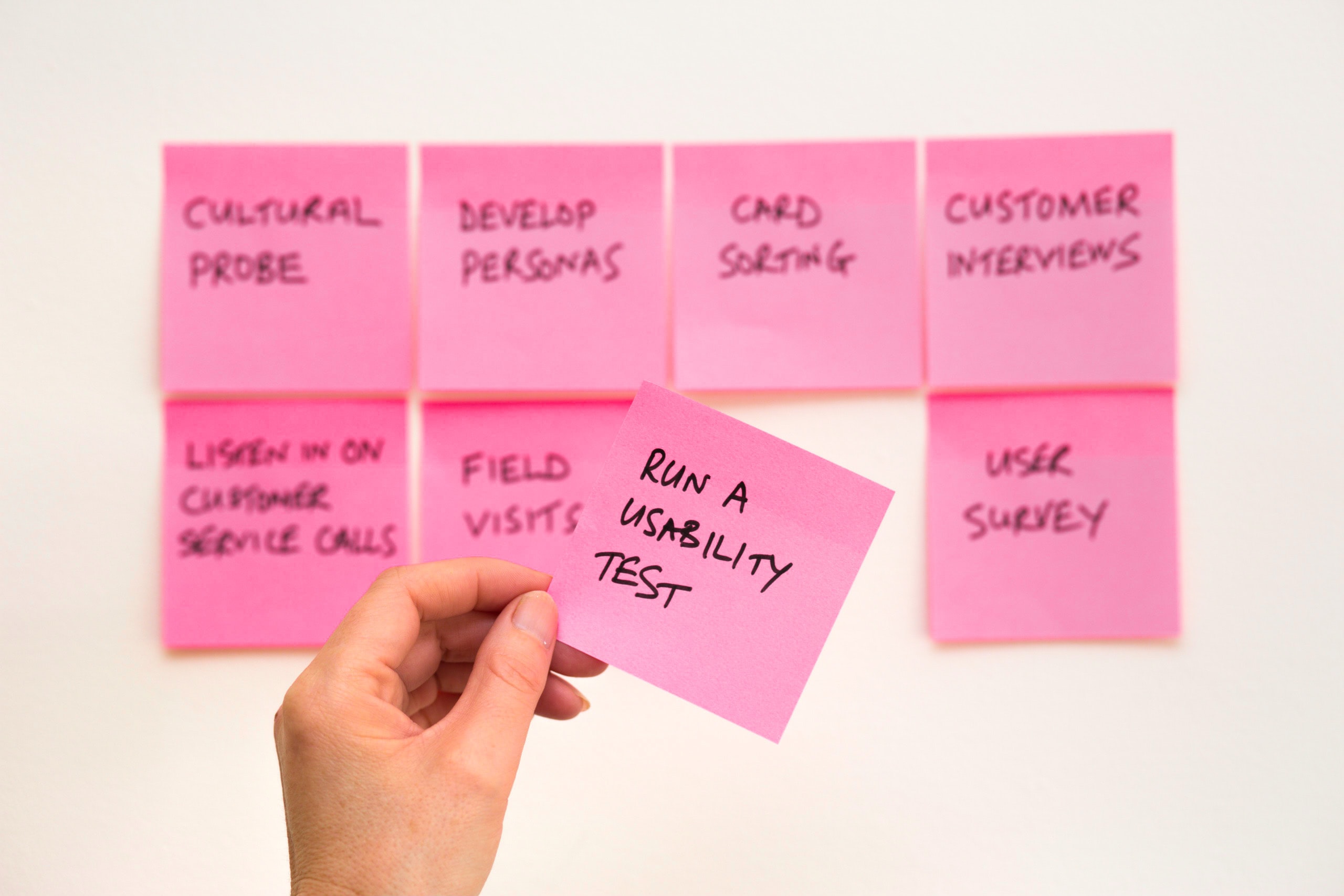

Don't you want to read? Try listening to the article in audio mode 🎧
There are some best practices in user experience design that most web designers will follow for decades. And there are UX designers who will subvert expectations and break the rules in bold and ambitious ways.
Both following the rules to the tee and breaking them altogether have their drawbacks. But you don’t need to go to extremes to be a good UX designer. Instead, follow the recent trends in UX design to know how the industry is changing in real-time and act accordingly.
Here are seven UX trends that will define 2023.
[caption id="attachment_12710040" align="alignnone" width="785"] Source: Unsplash[/caption]
Source: Unsplash[/caption]
 Source: Clevertap[/caption]
Data visualization is not only reserved for data-driven apps and websites. It’s also possible to tell a story with data visualization, one that shows your brand’s strengths.
And it’s not even a new thing. Here’s an example of effective data visualization from back in 2012.
[caption id="attachment_12710042" align="aligncenter" width="612"]
Source: Clevertap[/caption]
Data visualization is not only reserved for data-driven apps and websites. It’s also possible to tell a story with data visualization, one that shows your brand’s strengths.
And it’s not even a new thing. Here’s an example of effective data visualization from back in 2012.
[caption id="attachment_12710042" align="aligncenter" width="612"] Source: Apple[/caption]
Apart from telling stories with data, you can give your users insights into how they use your app. The best example of this is Spotify’s annual visualization of the music users play.
Other apps provide visualizations for the time spent in the app, the progress made in certain aspects of it, and other usage statistics.
Source: Apple[/caption]
Apart from telling stories with data, you can give your users insights into how they use your app. The best example of this is Spotify’s annual visualization of the music users play.
Other apps provide visualizations for the time spent in the app, the progress made in certain aspects of it, and other usage statistics.
 Source: Ikea[/caption]
Many other brands picked up on this idea, and now it’s possible to try on anything from glasses to make up with a branded app.
If you’re designing a buyer’s experience for a product brand, it can be a good idea to incorporate extended reality into the mix. The downside is that it can be costly to develop such an app, but the adoption of the technology is there, so the payout can be worth it.
Source: Ikea[/caption]
Many other brands picked up on this idea, and now it’s possible to try on anything from glasses to make up with a branded app.
If you’re designing a buyer’s experience for a product brand, it can be a good idea to incorporate extended reality into the mix. The downside is that it can be costly to develop such an app, but the adoption of the technology is there, so the payout can be worth it.
 Source: Protonmail[/caption]
A progress bar that fills up and changes colour upon completion is one option.
[caption id="attachment_12710045" align="alignnone" width="455"]
Source: Protonmail[/caption]
A progress bar that fills up and changes colour upon completion is one option.
[caption id="attachment_12710045" align="alignnone" width="455"] Source: Codepen[/caption]
Another creative option for password microinteraction is a bulleted list that changes dynamically as the user types in their password.
[caption id="attachment_12710046" align="alignnone" width="506"]
Source: Codepen[/caption]
Another creative option for password microinteraction is a bulleted list that changes dynamically as the user types in their password.
[caption id="attachment_12710046" align="alignnone" width="506"] Source: Behance[/caption]
Source: Behance[/caption]
 Source: Dribble[/caption]
Hovering over a link that leads to a category page makes pricing become visible. The same information could be conveyed with a table, but when implemented this way, it gives the user more agency in how they view the site.
Source: Dribble[/caption]
Hovering over a link that leads to a category page makes pricing become visible. The same information could be conveyed with a table, but when implemented this way, it gives the user more agency in how they view the site.
 Source: Huffington Post[/caption]
The same page shows a lot more elements when it’s at full size, which is easier to interact with.
[caption id="attachment_12710049" align="alignnone" width="729"]
Source: Huffington Post[/caption]
The same page shows a lot more elements when it’s at full size, which is easier to interact with.
[caption id="attachment_12710049" align="alignnone" width="729"] Source: Huffington Post[/caption]
It’s best to start creating a mockup from the smallest size, for instance, that of a smartphone. It’s much easier to then expand the website’s elements to a larger screen once you perfect the way it looks on a phone screen.
Since phone screens lead to a much more condensed way of viewing a website, you may hide some website elements from being viewed on certain devices. This is especially important for interactive elements like scripts for cursor interaction. If you’re aiming to do a microinteraction, focus on swiping interactions instead of cursors.
Source: Huffington Post[/caption]
It’s best to start creating a mockup from the smallest size, for instance, that of a smartphone. It’s much easier to then expand the website’s elements to a larger screen once you perfect the way it looks on a phone screen.
Since phone screens lead to a much more condensed way of viewing a website, you may hide some website elements from being viewed on certain devices. This is especially important for interactive elements like scripts for cursor interaction. If you’re aiming to do a microinteraction, focus on swiping interactions instead of cursors.
 Source: Unsplash[/caption]
Source: Unsplash[/caption]
Data Visualization
In a world where information is everything, making sense of it all can be difficult. The job of a UX designer is to visualize data and turn it into easily understandable streams of information that are full of insights. For apps that work specifically with large amounts of data, like CRMs or data analytics tools, good data visualization is paramount. The goal is to make the way the data is visualized fit the audience. Not every audience needs a very detailed visualization. The audience needs to get the right information from the stream of data. The way you visualize the data must correspond to that. [caption id="attachment_12710041" align="aligncenter" width="324"] Source: Clevertap[/caption]
Data visualization is not only reserved for data-driven apps and websites. It’s also possible to tell a story with data visualization, one that shows your brand’s strengths.
And it’s not even a new thing. Here’s an example of effective data visualization from back in 2012.
[caption id="attachment_12710042" align="aligncenter" width="612"]
Source: Clevertap[/caption]
Data visualization is not only reserved for data-driven apps and websites. It’s also possible to tell a story with data visualization, one that shows your brand’s strengths.
And it’s not even a new thing. Here’s an example of effective data visualization from back in 2012.
[caption id="attachment_12710042" align="aligncenter" width="612"] Source: Apple[/caption]
Apart from telling stories with data, you can give your users insights into how they use your app. The best example of this is Spotify’s annual visualization of the music users play.
Other apps provide visualizations for the time spent in the app, the progress made in certain aspects of it, and other usage statistics.
Source: Apple[/caption]
Apart from telling stories with data, you can give your users insights into how they use your app. The best example of this is Spotify’s annual visualization of the music users play.
Other apps provide visualizations for the time spent in the app, the progress made in certain aspects of it, and other usage statistics.
Extended Reality
Designing websites and web applications is now more interactive than ever. One thing that has already become a good practice is using extended reality. Extended reality is a term that encompasses virtual reality, augmented reality, and mixed reality. It means bringing elements of digital reality into the real world via VR headsets, smart glasses, or simply your phone. Of course, VR doesn’t have enough market penetration to make designing for it specifically viable, but VR and AR combined are now used by a third of the US population, mostly in the form of AR software. For brands that sell physical products, this presents a perfect opportunity to enhance the user experience. Mixing reality with digital elements is possible via smartphone and can be extremely useful, especially since many purchases are now done online with no option to try on the product. Ikea has an augmented reality app that serves as a good example for UX designers. The app lets users place Ikea furniture in their homes with a camera. [caption id="attachment_12710043" align="alignnone" width="863"] Source: Ikea[/caption]
Many other brands picked up on this idea, and now it’s possible to try on anything from glasses to make up with a branded app.
If you’re designing a buyer’s experience for a product brand, it can be a good idea to incorporate extended reality into the mix. The downside is that it can be costly to develop such an app, but the adoption of the technology is there, so the payout can be worth it.
Source: Ikea[/caption]
Many other brands picked up on this idea, and now it’s possible to try on anything from glasses to make up with a branded app.
If you’re designing a buyer’s experience for a product brand, it can be a good idea to incorporate extended reality into the mix. The downside is that it can be costly to develop such an app, but the adoption of the technology is there, so the payout can be worth it.
AI-driven content
The development of new software also makes the mundane tasks of UX designers much easier. Despite AR being widely adopted and a visual medium being at the forefront of web design, a big part of user experience is still written content. Understanding what your customers want to read about and the problems they need to solve is a UX job that requires a lot of research. AI makes that research much easier, and it’s being adopted by more and more companies. Artificial intelligence is still not developed enough to the stage where it can create quality content on its own, though. Even the most advanced GPT-3 apps can only produce generic content without much depth. Where AI excels, however, is in content research and content optimization. For example, SE Ranking’s content marketing software helps UX designers and marketers create AI-driven content briefs and evaluate their content against top competitors as well as their initial requirements. The tool searches the web for a keyword or a topic you give it and helps create a brief based on the best-performing pieces of content. The tool also allows you to easily add subtopics to your brief that you can later include in the content to improve the structure of the page. It also includes SEO hints like which specific keywords are best to include for improved search visibility. These insights help to improve the content itself for UX and search visibility and may also improve user interaction and retention and reduce the time needed to arrive at this page structure through experimentation.Microinteractions
In the world of web design, where many websites look the same and have the same tried and tested structure, it’s the small elements of interacting with the site that make the user experience unique. That’s why developing microinteractions was one of the most interesting trends of 2022 that’s not going to disappear in 2023. To understand what a microinteraction is, think of Facebook emojis. When you react to a post, you don’t just leave an emoji there; you see a neat little animation. The same with posting a selected emoji to a chat — it’s sent with a pretty animation. These small details are arguably part of the user interface, but they do serve a UX purpose, too — they make the experience of using your website a bit more pleasant. You don’t have to incorporate emojis into your website to create a good microinteraction, though. Instead, focus on making key interactions with your site more engaging with a bit of JS or CSS animation. One of the easiest examples of an effective microinteraction is adding a password progress bar. Instead of just informing the user what the password should be like, you can make it interactive. [caption id="attachment_12710044" align="alignnone" width="438"] Source: Protonmail[/caption]
A progress bar that fills up and changes colour upon completion is one option.
[caption id="attachment_12710045" align="alignnone" width="455"]
Source: Protonmail[/caption]
A progress bar that fills up and changes colour upon completion is one option.
[caption id="attachment_12710045" align="alignnone" width="455"] Source: Codepen[/caption]
Another creative option for password microinteraction is a bulleted list that changes dynamically as the user types in their password.
[caption id="attachment_12710046" align="alignnone" width="506"]
Source: Codepen[/caption]
Another creative option for password microinteraction is a bulleted list that changes dynamically as the user types in their password.
[caption id="attachment_12710046" align="alignnone" width="506"] Source: Behance[/caption]
Source: Behance[/caption]
Advanced cursor interactions
One of the most interesting and creative microinteractions that is likely to be relevant in 2023 are cursor interactions. In the last decade, changing the way the cursor looks or how it functions has become a faux-pas, something reserved for amateur sites or browser games. But the trend started to reverse itself in 2022, with many creators embracing unorthodox ways of dealing with user input on the website, even if that input is simply hovering over an element. Advanced cursor interaction is simply any interaction that is triggered by hovering or clicking on an element of the website other than a change of colour. Cursor interactions can be really imaginative, like a trail of paint following the cursor or the cursor being replaced by a looking glass. But these are more suited for creative, experimental websites, and very few B2B brands would greenlight doing something so unorthodox. Here’s an example of a cursor interaction that breaks away from the norm but keeps the user experience simple and intuitive. [caption id="attachment_12710047" align="alignnone" width="845"] Source: Dribble[/caption]
Hovering over a link that leads to a category page makes pricing become visible. The same information could be conveyed with a table, but when implemented this way, it gives the user more agency in how they view the site.
Source: Dribble[/caption]
Hovering over a link that leads to a category page makes pricing become visible. The same information could be conveyed with a table, but when implemented this way, it gives the user more agency in how they view the site.
Voice-to-speech search or assistance
Designing small experiences matters. But designing a huge change in experience matters a lot more, especially when we consider accessibility. Voice search is becoming more and more popular, as a total of 27% of users worldwide are using voice search. It’s only natural to bring this way of interaction from the search engine to the websites people use. You can fit your website with voice search to make browsing the site on mobile even easier. It’s possible to make certain website actions based on voice input as well, like adding items to a cart and paying. Another accessibility feature worth adding is text-to-speech software that can voice page copy and play it back to the user. This is basically a whole new way of interacting with the website, and designing it from the ground up takes a lot of work. But, considering that people are embracing this trend, it could well be worth the effort.Responsive design
Designing websites that look good on any screen isn’t just a trend. It’s a necessity. Internet users expect websites to be cross-platform, and if your website doesn’t display properly on their device, they may engage far worse. A responsive website isn’t just one that works well on mobile. It’s a website that adapts to the screen size. Mobile traffic is one of the key reasons UX has adopted a responsive approach, but this approach isn’t only useful for mobile. The difference in screen sizes on laptops and PCs and the fact that many people would view your site in a downsized browser window mean that a good site should adapt to any changes in screen size. Here’s a Huffington Post page that’s resized on half of the laptop screen. It shows much larger thumbnails and displays fewer of them. [caption id="attachment_12710048" align="alignnone" width="455"] Source: Huffington Post[/caption]
The same page shows a lot more elements when it’s at full size, which is easier to interact with.
[caption id="attachment_12710049" align="alignnone" width="729"]
Source: Huffington Post[/caption]
The same page shows a lot more elements when it’s at full size, which is easier to interact with.
[caption id="attachment_12710049" align="alignnone" width="729"] Source: Huffington Post[/caption]
It’s best to start creating a mockup from the smallest size, for instance, that of a smartphone. It’s much easier to then expand the website’s elements to a larger screen once you perfect the way it looks on a phone screen.
Since phone screens lead to a much more condensed way of viewing a website, you may hide some website elements from being viewed on certain devices. This is especially important for interactive elements like scripts for cursor interaction. If you’re aiming to do a microinteraction, focus on swiping interactions instead of cursors.
Source: Huffington Post[/caption]
It’s best to start creating a mockup from the smallest size, for instance, that of a smartphone. It’s much easier to then expand the website’s elements to a larger screen once you perfect the way it looks on a phone screen.
Since phone screens lead to a much more condensed way of viewing a website, you may hide some website elements from being viewed on certain devices. This is especially important for interactive elements like scripts for cursor interaction. If you’re aiming to do a microinteraction, focus on swiping interactions instead of cursors.
Conclusions
User experience design is changing to serve the user better. Some things like responsive design have become a best practice that few can argue against. Other things like advanced cursor interactions may be design fads that eventually go away but will stay relevant in 2023. Which of these trends should you incorporate into your website? The ones that serve your customers best. In UX, it’s always important to design for the end user of the website or app. If the user can have a better experience with a new trend incorporated in the design, be it with voice search or a microinteraction, the designer should implement it. So make sure to do user research to confirm that users like the new features you implement.
Article updated on: 09 August 2023

Don't Waste Your Talent. Turn It Into a Career With a Course That Fits Your Needs!
Talent Garden is your Digital Skills Academy, offering courses in Digital Marketing, UX Design, Digital HR and Data Analysis designed to launch your career.
Keep reading

13
min read
Designing for gratification: why a career in UX Design might be a good idea
How Badly Do We Need Gratifying Experiences? Very much. Very much indeed. Think about it: every interaction you have ...
Talent Garden
20/10/2023

6
min read
How to integrate user interviews and user tests in product development
User Experience (UX) has become a buzzword and mega-trend. Innovation and project/product managers, designers and ...
Talent Garden
27/06/2022

7
min read
9 Successful Tips For Enhancing Your Developer-Designer Collaboration
Any major project will have a team of professionals working closely with one another. One example of close ...
Talent Garden
22/12/2023

4
min read
James Reeve's Guide to UI Design
How can you become a UI Designer? Learning from the best. That’s why we interview James Reeve, Creative Director of ...
Talent Garden
15/04/2019
